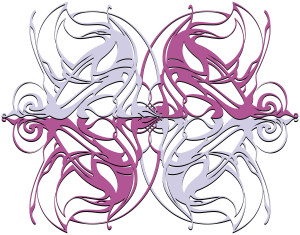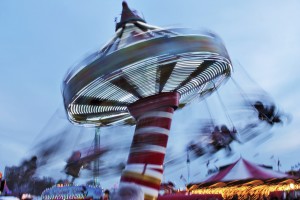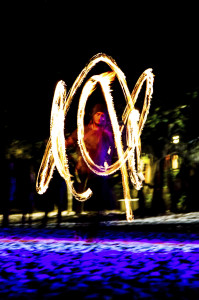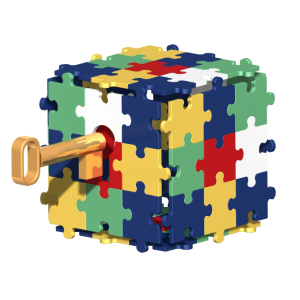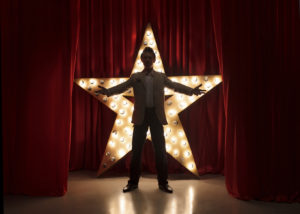 Laban moved into new Choreutic territory with five-rings, and consequently they are fascinating to embody. Primarily Laban built his space harmony scales around the cubic diagonals. But the peripheral and transverse five-rings that Cate Deicher and I will be teaching in the Advanced Space Harmony workshop are built around the planar diameters.
Laban moved into new Choreutic territory with five-rings, and consequently they are fascinating to embody. Primarily Laban built his space harmony scales around the cubic diagonals. But the peripheral and transverse five-rings that Cate Deicher and I will be teaching in the Advanced Space Harmony workshop are built around the planar diameters.
The peripheral five-rings create pentagonal shapes around corners of the icosahedron that both match and challenge range of motion for gestures of the arms and legs.
The transverse five-rings trace star-like shapes around corners of the icosahedron. These shapes stimulate new ways to think about trace-forms and areas of the kinesphere, and they can be fun to embody.
Put some stars in your kinesphere with the upcoming Ico workshop in New York City, December 3 and 4. But hurry, registration closes November 28.

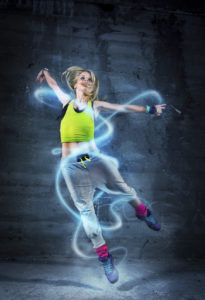 by Cate Deicher
by Cate Deicher In 1975 Buckminster Fuller coined the term “tensegrity” by contacting two terms — tensional and integrity. Simply defined, tensegrity refers to “compression elements in a sea of tension.”
In 1975 Buckminster Fuller coined the term “tensegrity” by contacting two terms — tensional and integrity. Simply defined, tensegrity refers to “compression elements in a sea of tension.” by Nancy Beardall
by Nancy Beardall